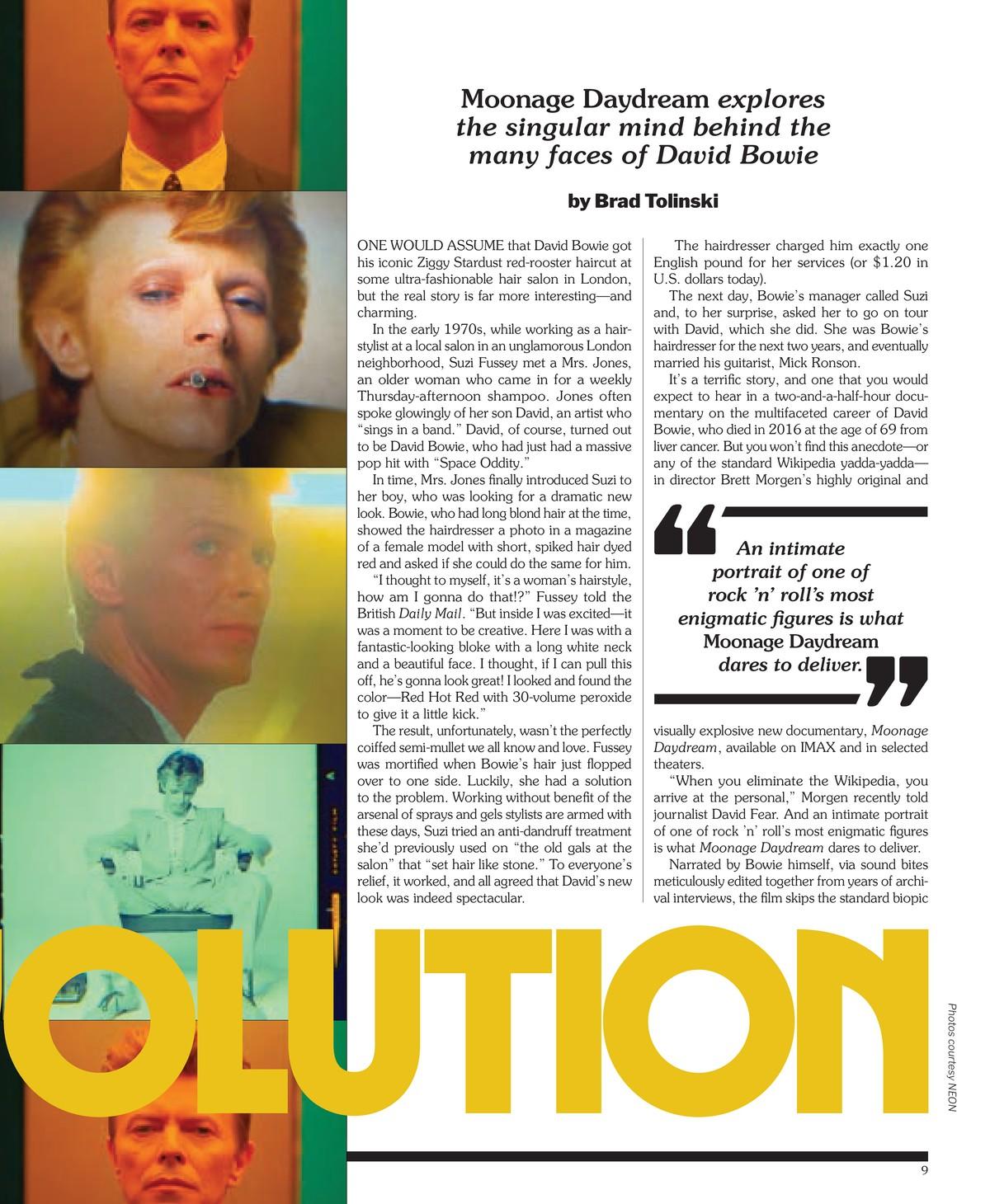THEY IS REVOLUTION
Moonage Daydream explores the singular mind behind the many faces of David Bowie.


One would assume that David Bowie got his iconic Ziggy Stardust red-rooster haircut at some ultra-fashionable hair salon in London, but the real story is far more interesting—and charming.
In the early 1970s, while working as a hairstylist at a local salon in an unglamorous London neighborhood, Suzi Lussey met a Mrs. Jones, an older woman who came in for a weekly Thursday-afternoon shampoo. Jones often spoke glowingly of her son David, an artist who “sings in a band.” David, of course, turned out to be David Bowie, who had just had a massive pop hit with “Space Oddity.”
In time, Mrs. Jones finally introduced Suzi to her boy, who was looking for a dramatic new look. Bowie, who had long blond hair at the time, showed the hairdresser a photo in a magazine of a female model with short, spiked hair dyed red and asked if she could do the same for him.

